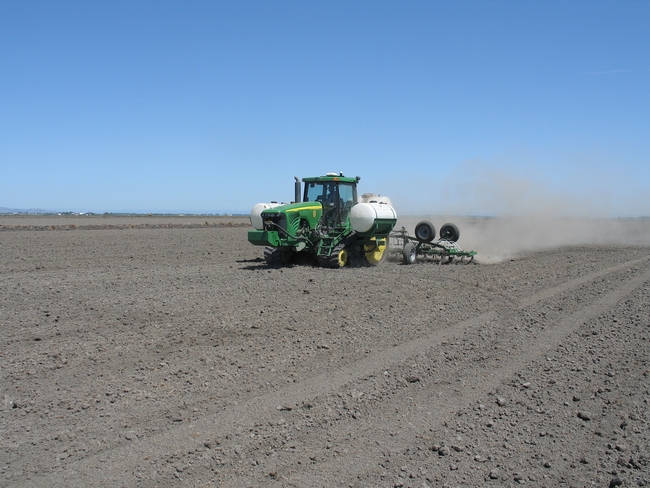I have heard that there may be a shortage of aqua-ammonia (aqua) fertilizer for the start of this year's rice season. This begs the question as to what are the options. In previous studies, we have compared aqua to urea fertilizer. In one study, we compared aqua to liquid urea; and in another study we compared aqua to granular urea. The liquid urea was applied exactly as one would apply aqua (injected 3 to 4 inches below the soil surface). The granular urea was applied to the soil surface, but then lightly incorporated. How much you incorporate depends on the state of the seedbed. If you have a cloddy seedbed, a lot of the urea will fall into the cracks between the clods and relatively little is needed (maybe a light harrow in front of a roller). If you have a fine seedbed it may require a light disking. Importantly (and good news), is that urea dissolves relatively quickly and the flood water also helps move the dissolved urea further down the soil profile (this is not the case with ammonium sulfate). In both studies, we found that urea performed similar to aqua (in terms of yield and N uptake efficiency). However to get these results, you must make sure that the urea is applied to a dry soil before flooding and it be managed so that it gets incorporated below the soil surface before planting (or banded as you do with aqua). I have found that when urea is used, that the crop never seems as uniform as when aqua is used as the main N source; however this has not affected rice yields. It may affect your ability to assess the crop mid-season for an N deficiency.
If you flood the field before applying your nitrogen fertilizer, then have to apply all of your fertilizer N into a flooded rice field. In this case, your N use efficiency will be less and the cost of application will be higher. If you are in this position, apply N in four split applications. Apply 20, 30, 30 and 20% of the N rate at around 2, 4, 6 and 8 weeks after planting, respectively. The first N application should be ammonium sulfate or a starter blend of fertilizer (one that contains N, P and K). We do not recommend urea for the first N application. The other three applications could be urea. Efficiency will be lower in this system, so you may need to increase your overall N rate.
